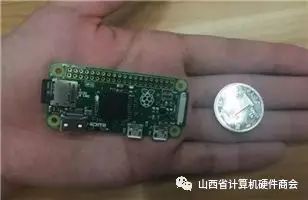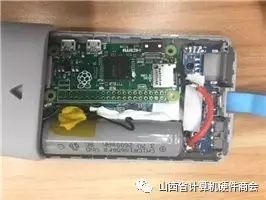Last night, while going out for dinner, I stumbled upon this:

This must be the so-called “shared power bank” right?
I don’t know how you feel about it, but this thing has been all over my feed in the past few days…
Shared bikes, another member of the “sharing family,” have not been doing well lately. Despite significant capital investment, the market is still chaotic, and recently introduced policies have put pressure on them, making it quite troublesome.
Investors are turning to other members of the “sharing family” since the profit models are similar. They can easily adapt what worked for bikes to these new ventures, which is convenient and worry-free~
For example, the recently funded “shared basketball”:

The shared power bank seems to be in the right place at the right time, suddenly becoming a hot topic, hailed as “the next investment opportunity,” and poised to replace shared bikes…
On May 4th, Jumei Youpin announced it would acquire a stake in Shenzhen Street Electric Technology Co., Ltd. for 300 million RMB, officially entering the shared power bank market. So far, the three giants of BAT have all entered, and shared power bank companies have raised nearly 1 billion!
Uh… I am a bit confused…
The “entertainment circle’s watchdog” Wang Sicong couldn’t sit still and gave a “high” evaluation of shared power banks:

Jumei Youpin’s CEO Chen Ou quickly responded on Weibo:

“Thank you for your supervision, not every project can succeed. Starting a business is a low-probability event. If Street Electric fails, we can do charity, but I hope you don’t let your emotions stop this project from entering Wanda.”
I don’t know if shared power banks can succeed, but what I find most puzzling is, isn’t the “sharing economy” about charging fees to reuse social idle resources? Shouldn’t the so-called “shared power bank” be called “online rental power bank”?
With fast charging technology so advanced, it’s hard to say whether power banks are a necessity.
Perhaps they are aiming for the 5G era, where the era of watching videos instantly might be their way out…
No matter how we feel about it, shared power banks are on fire~
We won’t discuss investment for now, but as a heavy user of tech products, my biggest concern about anything connected to my phone or computer is:
Is it safe?
In an era where privacy breaches are rampant, protecting the little privacy on my phone is a huge worry, after all, no one wants to be the next Chen teacher…
So far, shared power banks have just entered the market, and no safety issues have been reported. However, I won’t easily trust a new project that hasn’t been tested.
Everyone is familiar with “public charging stations,” which are the common sight at train stations and airports~

“Public charging stations” have been proven to have serious safety risks, and CCTV even did a special report on it…
However, “public charging stations” are essentially computers with integrated circuit boards, making it easy for hackers to exploit. Moreover, some “smart people” have found a way to charge power banks using public charging stations and then use those power banks to charge their phones!
Power banks are generally small, less than the size of a palm, and their internal structure seems simple, so they look harmless, right?

Too Young~
Don’t underestimate technology; it can backfire…
To verify the safety of shared power banks, I decided to conduct an experiment myself!
First, I opened my phone and found the nearest shared power bank location.

I didn’t expect there to be so many already…
I went to the nearest location and borrowed a power bank~

Honestly, paying a 100 RMB deposit and scanning a code to complete the rental is indeed convenient, and returning it is also easy, and the lifespan should be decent~
However, this power bank wasn’t so lucky; as soon as I returned to the office, I disassembled it!
Hehehe~

Seeing this crude motherboard and two 2600mA lithium batteries, I suddenly felt that this 100 RMB was a bit of a loss…
At this moment, my little treasure made its appearance: Raspberry Pi Zero
Feel its size

The “Raspberry Pi” is actually a “mini computer” designed for learning computer programming. Although small and inexpensive, it is powerful and supports basic computer functions.
This time, I specifically chose the smallest model with Wi-Fi functionality, the “Raspberry Pi Zero”. Let’s see if we can fit it into the power bank!

After removing one battery, there was no problem at all! Since the batteries are in parallel, the power display is flawless!
Now the next steps are straightforward~
First, connect the Raspberry Pi to the lithium battery of the power bank to maintain power supply, then directly connect the power bank’s data cable to the Raspberry Pi, so when your phone is “charging,” it is directly connected to the Raspberry Pi!
Since the Raspberry Pi supports programming, I set up a tool in the Raspberry Pi and wrote an automatic script to check every second for any connected devices:
waiting for fish…

Next, we connected an iPhone to the Raspberry Pi to see how the iOS system, known for its security, would perform:

As a pure and kind child, I naturally chose to “trust”~
Explosion!

After clicking “trust,” all the information on the phone was automatically synchronized to the SD card of the Raspberry Pi, including your phone’s unique identifier, contacts, photos, and even account passwords for apps…

As long as the SD card has enough memory, it can steal as much information from your phone as possible, and in a Wi-Fi environment, this information can also be automatically uploaded to the cloud.
What would happen if this information were stolen?
The simplest is your phone number, which can be sold directly, so be prepared for a barrage of spam messages!
Secondly, if the contacts are leaked, you can expect various scam messages and calls: “I am from the Northeast Black Society, your goose is in my hands~”.
No need to mention the photos; just flipping through them can scare you to death!
The account passwords automatically saved on the phone can be used by hackers for “credential stuffing,” meaning if you use the same password, all your accounts are basically compromised, and even bank card information could be at risk.
Once the unique identifier of the phone is captured, your location information can be bought directly on a certain platform!

This means that with just one connection, you instantly become transparent; what is privacy? It doesn’t exist~
If your phone runs on Android, it’s even worse. Many users may know that Android has a tool called “ADB”. With it, you can directly control your phone to access online banking or send a text to your boss confessing your love~
ADB stands for Android Debug Bridge, a tool in the Android SDK that allows direct operation and management of Android devices.
From this, we can conclude:
Shared power banks indeed have security risks!
This issue is hard to pin on anyone; after all, technology is not guilty…
I’m not saying the companies that manufacture shared power banks have problems, but rather that these power banks can be easily obtained and exploited by those with ill intentions.
I only did a demonstration; real hackers are much scarier…
This is not an alarmist statement. The power bank I chose is already one of the smallest on the market; those “large-sized” charging stations can exploit even more vulnerabilities.
The “Raspberry Pi” I chose is not the best choice for hackers either; there are smaller and cheaper devices available to complete these operations.
Finally, I’m just a self-taught programmer; in front of skilled hackers, there is no privacy that can’t be stripped away…
Fortunately this time, I acted before the scammers!
In the face of these threats, we don’t have to sit idly by. Let me teach you a few ways to protect your privacy:
iOS users should not easily click “trust this computer” when there is no data transfer requirement, especially when connecting to unfamiliar devices;
Android users should avoid enabling “developer mode”; it’s too scary;
Try not to use shared power banks from small brands or those provided by strangers; pay attention to the “integrity” of the power bank before use, and don’t use old or damaged power banks.
In this era, nothing is absolutely safe, and the awareness of protecting privacy is more important than ever.
While shared power banks indeed bring us convenience, there will inevitably be those with ulterior motives trying to do bad things. I just want to remind everyone to be cautious when using them~
“You all should be more careful~”